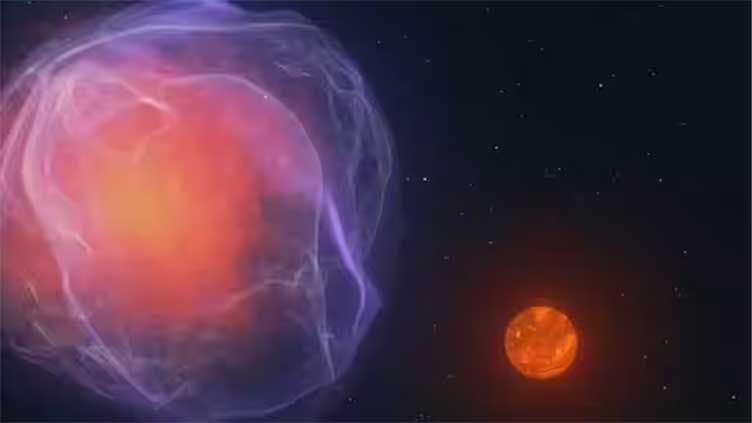Mysterious object cruising at scary speed inside our galaxy baffles scientists

Technology
Right now, it is more than 400 light-years from Earth
(Web Desk) - Nasa has spotted a rouge space body moving at extremely high speed in the Milky Way.
This hyper-speed object is over 27,306 times the size of Earth and might exit our galaxy pretty soon, as per the scientists.
A group of citizen scientists working with NASA's 'Backyard Worlds: Planet 9' project made the spectacular and shocking discovery.
The hypervelocity object was cruising at a speed of one million miles per hour at the time it was spotted. Right now, it is more than 400 light-years from Earth.
Its high speed means that it will soon break free of Milky Way’s gravity and shoot into intergalactic space. The scientists aren't fully sure what the celestial object is, but it is likely a brown dwarf. Such bodies are stars that are larger than a planet but have so little mass that they can't sustain long-term nuclear fusion like our sun.
German citizen-scientist Martin Kabatnik, a part of NASA's Backyard Worlds programme, said in a statement, "I can't describe the level of excitement."
"When I first saw how fast it was moving, I was convinced it must have been reported already."
If the object does turn out to be a brown dwarf, it would be the first time that such a body would have been documented in a chaotic, hyper-speed orbit and capable of escaping our galaxy.
Martin Kabatnik, Thomas P. Bickle and Dan Caselden first spotted the object a few years ago. Several ground-based telescopes were used to confirm the discovery after which it was characterised and named CWISE J124909.08+362116.0 in the books, and is known as CWISE J1249 in short.
Scientists believe that the supposed brown dwarf was once part of a two-star or binary-star system. However, after its white dwarf sister star died off, a nuclear fusion reaction called a supernova was triggered, leading to it becoming a runaway cosmic body.
Another theory suggests that CWISE J1249 originated inside a globular cluster of stars from where the pull of a black hole led it to run off.
Astronomer Dr Kyle Kremer, who is working with the team to understand the object, said in a statement, "When a star encounters a black hole binary, the complex dynamics of this three-body interaction can toss that star right out of the globular cluster."


